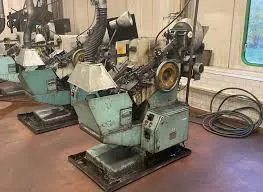
-
 Afrikaans
Afrikaans -
 Albanian
Albanian -
 Amharic
Amharic -
 Arabic
Arabic -
 Armenian
Armenian -
 Azerbaijani
Azerbaijani -
 Basque
Basque -
 Belarusian
Belarusian -
 Bengali
Bengali -
 Bosnian
Bosnian -
 Bulgarian
Bulgarian -
 Catalan
Catalan -
 Cebuano
Cebuano -
 Corsican
Corsican -
 Croatian
Croatian -
 Czech
Czech -
 Danish
Danish -
 Dutch
Dutch -
 English
English -
 Esperanto
Esperanto -
 Estonian
Estonian -
 Finnish
Finnish -
 French
French -
 Frisian
Frisian -
 Galician
Galician -
 Georgian
Georgian -
 German
German -
 Greek
Greek -
 Gujarati
Gujarati -
 Haitian Creole
Haitian Creole -
 hausa
hausa -
 hawaiian
hawaiian -
 Hebrew
Hebrew -
 Hindi
Hindi -
 Miao
Miao -
 Hungarian
Hungarian -
 Icelandic
Icelandic -
 igbo
igbo -
 Indonesian
Indonesian -
 irish
irish -
 Italian
Italian -
 Japanese
Japanese -
 Javanese
Javanese -
 Kannada
Kannada -
 kazakh
kazakh -
 Khmer
Khmer -
 Rwandese
Rwandese -
 Korean
Korean -
 Kurdish
Kurdish -
 Kyrgyz
Kyrgyz -
 Lao
Lao -
 Latin
Latin -
 Latvian
Latvian -
 Lithuanian
Lithuanian -
 Luxembourgish
Luxembourgish -
 Macedonian
Macedonian -
 Malgashi
Malgashi -
 Malay
Malay -
 Malayalam
Malayalam -
 Maltese
Maltese -
 Maori
Maori -
 Marathi
Marathi -
 Mongolian
Mongolian -
 Myanmar
Myanmar -
 Nepali
Nepali -
 Norwegian
Norwegian -
 Norwegian
Norwegian -
 Occitan
Occitan -
 Pashto
Pashto -
 Persian
Persian -
 Polish
Polish -
 Portuguese
Portuguese -
 Punjabi
Punjabi -
 Romanian
Romanian -
 Russian
Russian -
 Samoan
Samoan -
 Scottish Gaelic
Scottish Gaelic -
 Serbian
Serbian -
 Sesotho
Sesotho -
 Shona
Shona -
 Sindhi
Sindhi -
 Sinhala
Sinhala -
 Slovak
Slovak -
 Slovenian
Slovenian -
 Somali
Somali -
 Spanish
Spanish -
 Sundanese
Sundanese -
 Swahili
Swahili -
 Swedish
Swedish -
 Tagalog
Tagalog -
 Tajik
Tajik -
 Tamil
Tamil -
 Tatar
Tatar -
 Telugu
Telugu -
 Thai
Thai -
 Turkish
Turkish -
 Turkmen
Turkmen -
 Ukrainian
Ukrainian -
 Urdu
Urdu -
 Uighur
Uighur -
 Uzbek
Uzbek -
 Vietnamese
Vietnamese -
 Welsh
Welsh -
 Bantu
Bantu -
 Yiddish
Yiddish -
 Yoruba
Yoruba -
 Zulu
Zulu
Flat Thread Rolling Machinery for Efficient Production and Precision Engineering Solutions
Understanding Flat Thread Rolling Machines An Essential Tool for Precision Manufacturing
In today’s fast-paced manufacturing environment, precision and efficiency are paramount. Among the various technologies employed to meet these stringent demands, flat thread rolling machines have emerged as vital tools in the production of high-quality fasteners and threaded components. This article delves into the intricacies of flat thread rolling machines, their applications, advantages, and significance in modern manufacturing.
What is a Flat Thread Rolling Machine?
A flat thread rolling machine is a type of industrial equipment designed to create threads on cylindrical workpieces through a cold working process. Unlike traditional cutting methods that remove material, thread rolling displaces it, offering several advantages. The operation typically involves the use of two parallel rollers, which apply pressure to the metal workpiece, forming threads without generating excessive heat or waste material. This process is not only efficient but also enhances the mechanical properties of the finished product.
Key Applications
Flat thread rolling machines are utilized across various industries, including automotive, aerospace, and construction. They are integral in producing high-strength fasteners such as bolts, screws, and studs that demand precise dimensions and durability. The ability to create complex thread forms and sizes makes these machines versatile and essential in producing components for critical applications.
For example, in the automotive industry, flat thread rolling machines are employed to manufacture fasteners that are crucial for assembling engines, chassis, and other critical components. Similarly, in the aerospace sector, where safety and reliability are of utmost importance, these machines produce threaded components that can withstand extreme conditions.
Advantages of Flat Thread Rolling Machines
1. Increased Strength One of the most significant advantages of using a flat thread rolling machine is the enhancement of the mechanical properties of the material. The cold working process increases the hardness and strength of the threads, making them more resistant to shear and tensile forces.
flat thread rolling machine product

2. Material Efficiency Since the thread rolling process displaces rather than removes material, it results in minimal waste. This not only reduces material costs but also contributes to sustainable manufacturing practices.
3. Improved Tolerance and Finish Flat thread rolling machines can produce high-precision threads with excellent surface finishes, often reducing the need for secondary machining operations. This capability not only increases production efficiency but also ensures that the end product meets strict industry standards.
4. High Production Rates These machines can operate at high speeds, making them ideal for bulk production. The speed and efficiency of the process allow manufacturers to meet high demand without compromising on quality.
5. Versatility Flat thread rolling machines can be adapted to produce various thread forms and sizes, making them suitable for different applications. This adaptability is crucial in industries that require a diverse range of threaded components.
Conclusion
The importance of flat thread rolling machines in modern manufacturing cannot be overstated. Their ability to produce high-quality threaded components efficiently and sustainably positions them as essential equipment in various industries. As manufacturers continue to seek ways to optimize their production processes, the adoption of advanced technologies like flat thread rolling machines will likely increase.
In the future, we can expect further innovations in thread rolling technology, potentially incorporating automation and smart manufacturing principles. These advancements will not only enhance the capabilities of flat thread rolling machines but also contribute to the overall efficiency and sustainability of manufacturing processes.
Overall, flat thread rolling machines exemplify how traditional manufacturing techniques can evolve to meet modern challenges, ensuring that industries can thrive in a competitive marketplace while maintaining high standards of quality and efficiency.
